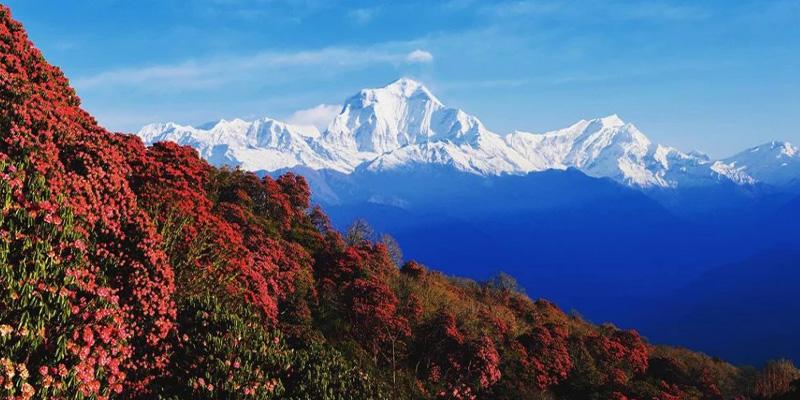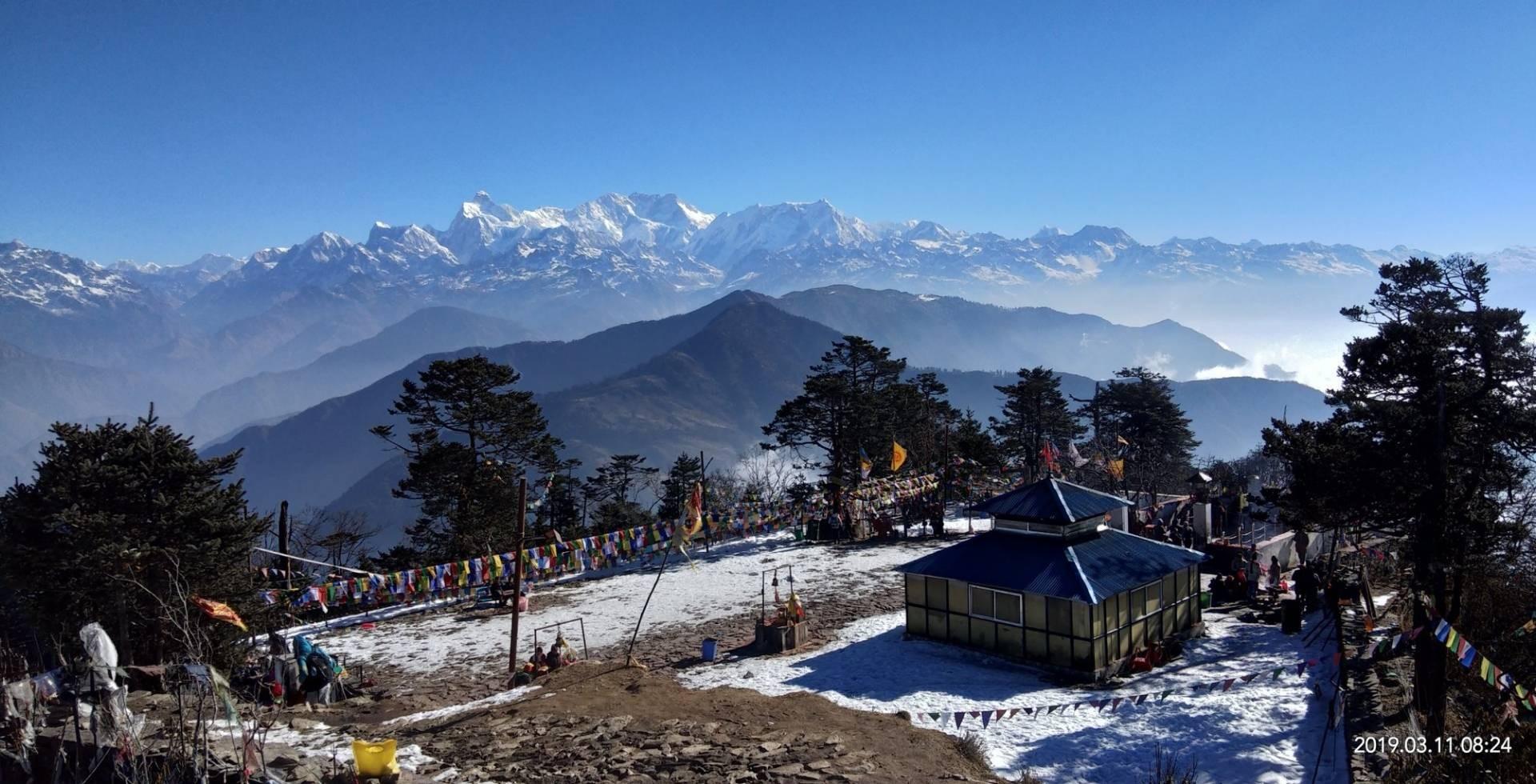Gokyo Lake
- Author : Prasiddha Kc
- Date : 29th September, 2024
- Time : 1 Min Read
- Euphoria
- Blog Detail
The Gokyo Lake trek is a traditional and revered journey, renowned for its magnificent views of mountain peaks and the impressive Ngozumpa Glacier, the largest in Nepal’s Himalayas.
This region offers soaring vistas of Nepal’s most popular 8,000-meter mountains, including Cho Oyu, Everest, Lhotse, and Makalu, all clearly visible from the vantage point of Gokyo Ri above Gokyo Lake. Among the notable attractions is the breathtaking view of the immense ice ridge between Cho Oyu and Gyachung (2,922 m) in the Khumbu region.
After a 35-minute Lukla flight from Kathmandu, we land at Lukla’s tiny airstrip, and that’s when the real adventure begins. Over the next few days, we engage in trekking and meaningful interactions with the local mountain people, affectionately known as Sherpas.
Embracing the charm of the region, we find comfort in staying at local lodges as we journey into the heartland of their villages. The experience allows us to witness both the stunning landscapes and the rich cultural tapestry that defines this extraordinary trek.
Everything is organized in conjunction with local Sherpa guides. Along the trek, we will pass Buddhist monasteries with views of Everest and other snow towering mountains getting closer by the day.
We will have rest days in the villages of Namche bazaar which will allow us to explore the region and acclimatize, which is very important. After trekking to Gokyo Ri (5,483 m), we return at a leisurely pace back to Namche and Lukla for our flight back to Kathmandu.
Short Itinerary
Day 01 :
Arrive at Tribhuvan International Airport in Kathmandu (1,400 m) and transfer to the Hotel. Overnight at a Hotel.
Day 02 :
Fly to Lukla (2,840 m) from Kathmandu – 35 minutes or drive to Manthali – 5 to 6 hours and take – 20 minutes flight to Lukla, and then trek to Phakding (2,610 m), – 3 to 4 hours. Overnight at a Guesthouse.
Day 03 :
Trek to Namche Bazaar (3,440 m) from Phakding – 5 to 6 hours. Overnight at Guesthouse.
Day 04 :
Namche Bazaar Acclimatization Day. Hike to Everest View Hotel (3,880 m) and back. Overnight at a Guesthouse.
Day 05 :
Trek to Phorste Thanga (3,680 m) from Namche Bazaar– 5 to 6 hours. Overnight at a Guesthouse.
Day 06 :
Trek to Machherma (4,470 m) from Phortse Thanga– 5 to 6 hours. Overnight at a Guesthouse.
Day 07 :
Trek to Gokyo (4,800 m) from Machherma – 5 to 6 hours. Overnight at a Guesthouse.
Day 08 :
Trek to Gokyo Ri (5,483 m) and Back to Gokyo – 5 to 6 hours. Overnight at a Guesthouse.
Day 09 :
Trek to Dole (4,200 m) from Gokyo – 6 to 7 hours. Overnight at a Guesthouse.
Day 10 :
Trek to Namche Bazaar (3,440 m) from Dole via Khumjung village (3,780 m) – 5 to 6 hours. Overnight at a Guesthouse.
Day 11 :
Trek to Lukla (2,840 m) from Namche Bazaar – 6 to 7 hours. Overnight at a Guesthouse.
Day 12 :
Fly to Kathmandu – 35 minutes or Manthali – 20 minutes from Lukla (2,840 m) and same-day drive to Kathmandu – 5 to 6 hours. Farewell Dinner in Kathmandu. Overnight at a Hotel.
Day 13 :
Transfer to the International Airport for Your Final Flight Departure.
ACE the Himalaya, Trekking in Nepal
Note
Our standard itinerary might differ slightly due to unpredictable happenings and events out of our control. Factors such as flight cancellation/delay, unfavorable weather, natural calamities, newly implemented government rules, political affairs, trekkers’ health condition, etc., are possible. Evaluating the situation’s possible solutions allow the trekking to resume as much as possible based on the best alternatives. In these times, we look for your cooperation and flexibility.
It is advised you arrive a day before the trip start date so you can rest and it also gives you time to buy clothing equipment and gear required for the trek. Also, it is best if you book your international flights with spare days in Nepal before and after your trek in case of any flight delays or cancellations due to weather. Moreover, you have options to customize this trip where you can add on a sightseeing tour in Kathmandu, other adventure sports or day trips around the country before or after the trek.
Read more
Lukla flight information Lukla flight information
We would like to inform you regarding the Lukla flight details which may affect your itinerary. During peak seasons, (including March, April, May, October and November) the flight to Lukla will be operated from Ramechhap/Manthali due to air traffic expansion, which is about a 5 to 6-hour drive from Kathmandu. Whereas, during nonpeak seasons, (including January, February, June, July, August, September and December) the flight is operated from Kathmandu.
Please be aware that the decision regarding the operation of flights solely depends on the airline and is influenced by the volume of travelers during the specific month.
Unpleasant weather conditions, congested traffic in the Airport, unmanaged runway, topographical difficulties, etc., are the significant reasons for Lukla flight delay/cancellation. Therefore, if you intend on trekking in the land of Everest region, arranging an additional one or two days in your trip is highly preferable. This will help in case of flight delay/cancellation and thus board on the pre-planned international flight.
Leave A Comment:
Author
Related Blogs
1 min read
by Anuja Pneru
Ghorepani Ponhill Trek
Ghorepani Poon Hill Trek is a perfect short beautiful journey in the Annapurna region. It is probably the most satisfying and finest destination in Ne...
1 min read
by Prekshya
Pathibhara
Pathibhara trek to visit Pathibhara Bhagawati temple in Taplejung Pathibhara trekking is the popular pilgrimage trek; 3794 m Pathibhara temple offers...
1 min read
by Prasiddha Kc
Gosaikunda
Gosaikunda trek 5 days is a short and beautiful trek in the Langtang region of Nepal on the north of Kathmandu valley. The Gosainkunda trekking gives...
Comments
rizz [ rizz@gmail.com ]
hi
28th February, 2025



